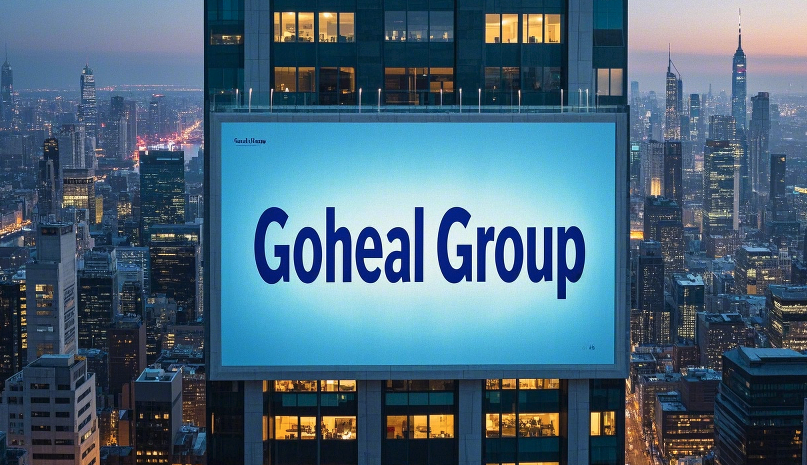"When the world changes, things change, and when things change, be prepared for change." This ancient saying from "Guan Zi·Quan Xiu" has been interpreted vividly in today's capital market. The implementation of the registration system has not only changed the way companies go public, but also profoundly reshaped the underlying logic of controlling rights acquisition. Once upon a time, a piece of listed shell resources was enough to leverage a valuation of tens of billions, but now, the halo of "shells" is gradually dimming, and those who stand in the valuation center are those "strategic assets" with hard technology labels, industrial synergy potential and high organizational compatibility.
As Goheal, we are deeply involved in and witnessed this transformation of the pricing paradigm. Today, we don't talk about how "shells" wither, but we want to discuss: "Strategic assets", are they really ready to take over?

American Goheal M&A Group
From "tickets" to "capabilities": the trio of the end of shell resources
Don't rush to sing a elegy for "shells", let's first see how it was squeezed off the altar step by step.
The first is the redefinition of the listing threshold. The registration system has greatly shortened the IPO cycle, from 3-5 years in the past to 1-2 years now. It is no longer an unattainable dream for companies to queue up for listing. In 2024, the direct access mechanism of the Beijing Stock Exchange will be launched, helping "specialized, sophisticated and innovative" companies to enter the capital market at lightning speed, directly diluting the scarcity of shell resources into daily consumer goods. According to Goheal's data, the shell premium rate has dropped from 200%-300% in 2015 to 20%-30% in 2025.
Secondly, the delisting rules have hit "zombie companies" with an iron fist. The "New Nine Articles" implement diversified mandatory delisting indicators. In 2025, it is expected that more than 80 companies will bid farewell to the A-share stage, and the ST sector index will fall by 45% compared with the new delisting rules in 2021. Shell speculation has changed from "speculating on the future" to "betting on life and death", and no one is willing to be a receiver.
Finally, the fundamental shift in the logic of regulatory review. Restructuring transactions no longer look at whether the form is compliant, but whether the "bone marrow" matches. If the synergy between the target of the merger and acquisition and the main business is less than 70%, it will be directly discouraged. All 23 cross-border mergers and acquisitions rejected in 2024 have stepped on this red line.
As a result, the former shell kings have now become abandoned. Goheal found in multiple projects that investors are more willing to pay for targets with "strong technology, reliable organization, and future track" rather than for an empty shell.
Four "yardsticks" for strategic asset pricing
After the collapse of the old value system, new measurement standards came into being. But "strategic assets" are not a mysterious metaphysical concept. Its value can be quantified, disassembled, and modeled. In practice, we have summarized four "new yardsticks" for pricing:
The first is the "dynamic" of technical barriers. It is not simply to see how many patents you have, but the "combat effectiveness" of the patents. The "patent quality index" has been used as a hard disclosure indicator in the M&A review of the Science and Technology Innovation Board, such as the product of the number of claims and the technology generation gap coefficient. In a material enterprise acquisition case in which Goheal participated, the patent reuse efficiency alone increased the target valuation by 18%.
The second is the "control" of the industrial chain. Under the logic of "big blue chips" represented by the main board, if the acquisition target has a market share of more than 15% in a segment, it is a plus point for valuation. After an auto parts company acquired a sensor manufacturer, the supply chain autonomy rate jumped from 50% to 85%, and the valuation premium soared to 1.8 times, which can be regarded as a realistic portrayal of "controlling the chain to win the world".
The third is the "compatibility" of organizational capital. Don't ignore the "soft value" of the management team. Today, investors have regarded "core team stability × incentive mechanism adaptability" as an important factor affecting the success rate of integration. Data shows that the integration success rate of mergers and acquisitions with a core team lock-up period of ≥3 years is 35% higher than that of ordinary cases.
The last is the "spillover" of the ecological network. What is "attached aura"? Like the Xiaomi ecological chain, user data can penetrate brand boundaries and synergy benefits can overflow financial statements. In the DCF model constructed by Goheal, non-financial indicators such as developer community activity and customer cross-conversion rate have been included in the valuation variables, contributing to the valuation increment of up to 32%.
Pricing toolbox: not just an update of the model, but also a rewrite of the language
Do you think it is as simple as adjusting a few weights in the valuation model? No, even the "language system" of the transaction has been completely rewritten.
For example, in the valuation model, we increased the weight of the technology iteration rate from 12% of the traditional DCF to 28%, and introduced the structural factor of "ecological network multiplier × patent pool value". This is not a simple formula, but an attempt to express future possibilities with mathematics.
In terms of transaction terms, it is no longer the traditional "cash + shares" to go around the world, but the Earn-out mechanism is introduced to link 30% of the consideration with the technological achievements in the next three years. The gambling agreement has also become more warm, from a single "performance target" to a "technical milestone + cash flow" dual trigger mode.
At the same time, the regulatory side is also quietly "loosening and improving efficiency". The Science and Technology Innovation Board has set up a fast track, which has shortened the M&A review cycle from 6 months to 3 months. Hard technology companies can even apply for "patent securitization" financing at the same time to improve liquidity. In many high-growth projects, Goheal successfully used the "Technology Maturity" certification of the Ministry of Industry and Information Technology to replace some financial audit reports, which not only reduced costs but also improved efficiency.
Who will take over? Competency test of strategic assets
So the question is: after the "shell resources" have withdrawn, are "strategic assets" really ready to take over?
From the perspective of valuation logic, the answer is yes. Strategic assets form a compound value closed loop in the three dimensions of "technology × industry × organization" and are closer to long-termism.
From the perspective of risk control, strategic assets provide "capability premium" rather than "institutional arbitrage". Although its uncertainty is high, it can be hedged through structured design and technical due diligence.
From the perspective of exit path, shell assets can only be sold at a high price by market sentiment, but strategic assets can obtain more stable returns through securitization of patent licensing income and repurchase by strategic investors.
Goheal believes that as technology penetration (patent reuse/derivative efficiency) gradually replaces PE multiples as a new valuation anchor, the pricing logic of strategic assets will become clearer and more executable.

Goheal Group
Epilogue: After strategic assets, who is the next keyword?
Shell resources have ended, and strategic assets have come on stage. But this paradigm shift is far from the end.
We may also need to think about the next question - when technology is fully understood by finance and when strategic assets become the "new consensus", who will be the next keyword in the M&A market? Is it "computing power"? Is it "algorithm"? Or will "data collaboration" itself become the direct currency of valuation?
Let us continue to ask questions at the starting point of the next capital cycle.
[About Goheal] Goheal is a leading investment holding company focusing on global M&A holdings. It has deeply cultivated the three core business areas of listed company control acquisition, listed company M&A and restructuring, and listed company capital operation. With its deep professional strength and rich experience, it provides enterprises with full life cycle services from M&A to restructuring to capital operation, aiming to maximize corporate value and achieve long-term benefit growth.